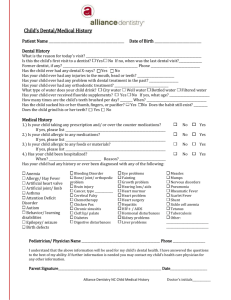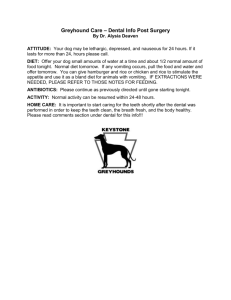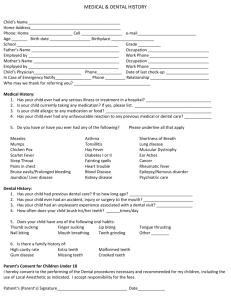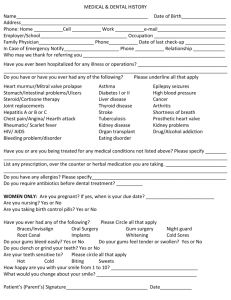Rodents Rabbits
advertisement
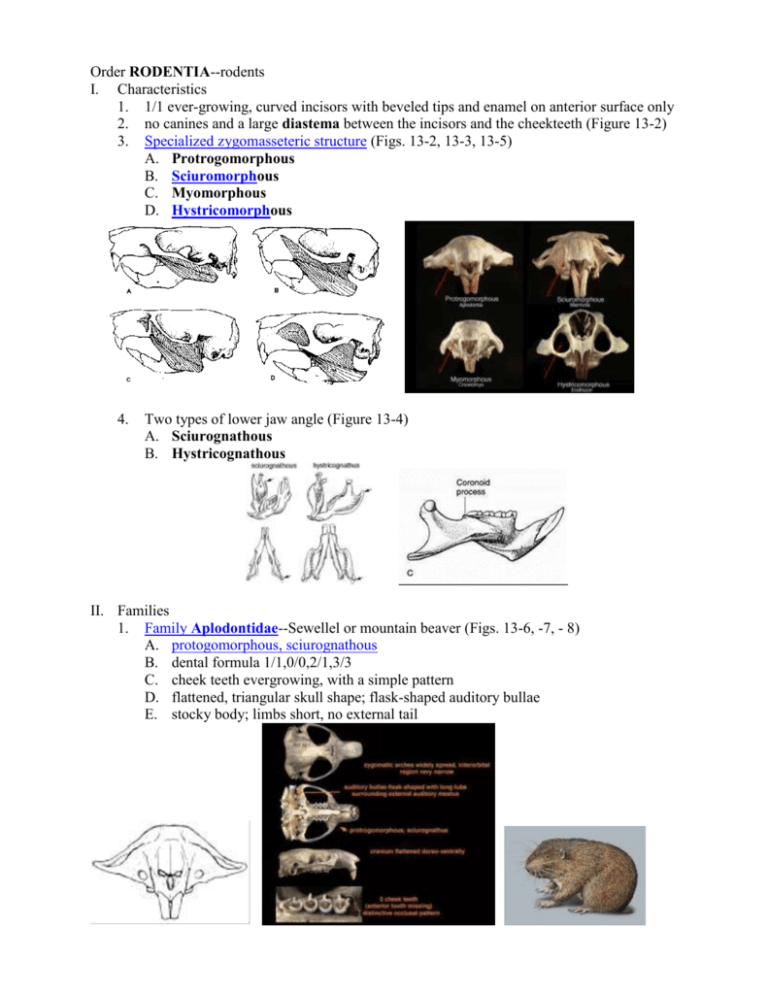
Order RODENTIA--rodents I. Characteristics 1. 1/1 ever-growing, curved incisors with beveled tips and enamel on anterior surface only 2. no canines and a large diastema between the incisors and the cheekteeth (Figure 13-2) 3. Specialized zygomasseteric structure (Figs. 13-2, 13-3, 13-5) A. Protrogomorphous B. Sciuromorphous C. Myomorphous D. Hystricomorphous 4. Two types of lower jaw angle (Figure 13-4) A. Sciurognathous B. Hystricognathous II. Families 1. Family Aplodontidae--Sewellel or mountain beaver (Figs. 13-6, -7, - 8) A. protogomorphous, sciurognathous B. dental formula 1/1,0/0,2/1,3/3 C. cheek teeth evergrowing, with a simple pattern D. flattened, triangular skull shape; flask-shaped auditory bullae E. stocky body; limbs short, no external tail 2. Family Sciuridae--tree squirrels, ground squirrels (marmots, prairie dogs), "flying" squirrels A. sciuromorphous, sciurognathous B. dental formula 1/1,0/0,1-2/1,3/3 C. cheek teeth rooted, with prominent cusps or ridges D. supraorbital (incomplete postorbital) process large E. tail generally long and bushy except in most ground squirrels 3. Family Castoridae--beaver (Figure 13-12, -13) A. sciuromorphous, sciurognathous B. dental formula 1/1,0/0,1/1,3/3 C. cheek teeth hypsodont, with prominent ridges; more or less parallel rows D. tail large, broad and flat E. hind feet webbed F. large bodied G. long guard hairs overly a fine, dense underfur. 4. Family Geomyidae--pocket gophers A. sciuromorphous, sciurognathous B. infraorbital foramen on rostrum, small, visible in lateral view C. zygomatic arch robust D. dental formula 1/1,0/0,1/1,3/3 E. external, furred cheek pouches F. eyes and pinnae very small G. forefoot with powerful claws H. thickset body I. tail short 5. Family Heteromyidae--pocket mice, Kangaroo rats (Figs. 13-16, -17) A. sciuromorphous, sciurognathous B. infraorbital foramen relatively large, pierces the rostrum, visible in lateral view C. dental formula 1/1,0/0,1/1,3/3 D. external, furred cheek pouches E. pinnae evident F. infraorbital foramen small, on rostrum. 6. Family Dipodidae--jumping mice, jerboas A. hystricomorphous, sciurognathous B. dental formula 1/1, 0/0, 1-0/0, 3/3 C. jumping mice are small, have a long tail, and long hind limbs Superfamily Muridoidea--rats and mice (including murids and cricetids) A. myomorphous, sciurognathous B. dental formula 1/1, 0/0, 0/0, 3/3 7. Family Muridae--: Old World rats and mice [Figs. 13-28 to -32] A. occlusal pattern of cheek teeth forms chevrons by connecting three transverse cusps. 8. Family Cricetidae 9. Subfamily Sigmodontinae: New World rats and mice a. anterior cheek tooth with, at most, two pairs of cusps opposite each other; pairs may be united to form lophs. 10. Subfamily Arvicolinae [Microtinae]: voles, lemmings, and muskrats a. complex occlusal pattern of cheek teeth of acute triangles; teeth are rootless b. frequently with compact body and short tail c. muskrats have a long, laterally compressed tail and partially-webbed hind feet. HYSTRICOMORPHA 11. Family Pedetidae--springhaas A. hystricomorphous, sciurognathous [Fig.13-34] B. dental formula 1/1,0/0,1/1,3/3 C. cheekteeth are evergrowing with a simplified crown pattern 12. Family Erethizontidae--American porcupines [Fig. 13-42] A. hystricomorphous, hysticognathous, but with angular process deflected internally B. dental formula 1/1,0/0,1/1,3/3 C. pelage conspicuously spiny, with barbs D. Tubercles on pads of manus to increase traction E. paroccipital process short, never extending below bulla 13. Family Myocastoridae--nutria A. hystricomorphous, hysticognathous B. dental formula 1/1,0/0,1/1,3/3 C. hind feet webbed D. tail round and scaly E. paroccipital process long 14. Family Cuniculidae--pacas A. hystricomorphous, hysticognathous B. dental formula 1/1,0/0,1/1,3/3 C. large rugose cheek plate, outer surface of zygomatic arch pitted; inner surface with deep depression. 15. Family Chinchillidae--chinchillas A. hystricomorphous B. angular process delicate and not strongly hysticognathous C. auditory canal oriented vertically and with accessory foramina at base D. dental formula 1/1,0/0,1/1,3/3 E. cheekteeth evergrowing, pattern of lamellar plates Order LAGOMORPHA-rabbits, hares, pikas Characters A. 2/1 incisors (Fig. 13-53) B. fenestrated maxilla C. scrotum anterior to penis (as in marsupials) D. soles of feet entirely furred E. hypsodont cheek teeth FAMILIES 1. Family Ochotonidae--pikas (figs. 13-56, 13-57) A. pinna short, no tail, short limbs B. maxilla with one large fenestra C. no supraorbital process 2. Family Leporidae--rabbits and hares (Fig. 13-58) A. pinna long, pointed, tail distinct, hindlimbs long B. highly fenestrated (lattice-like perforations) maxilla (fig 17.2); squamosals and parietals weakly fenestrated C. supaorbital process present What is the dental formula of leporids?


